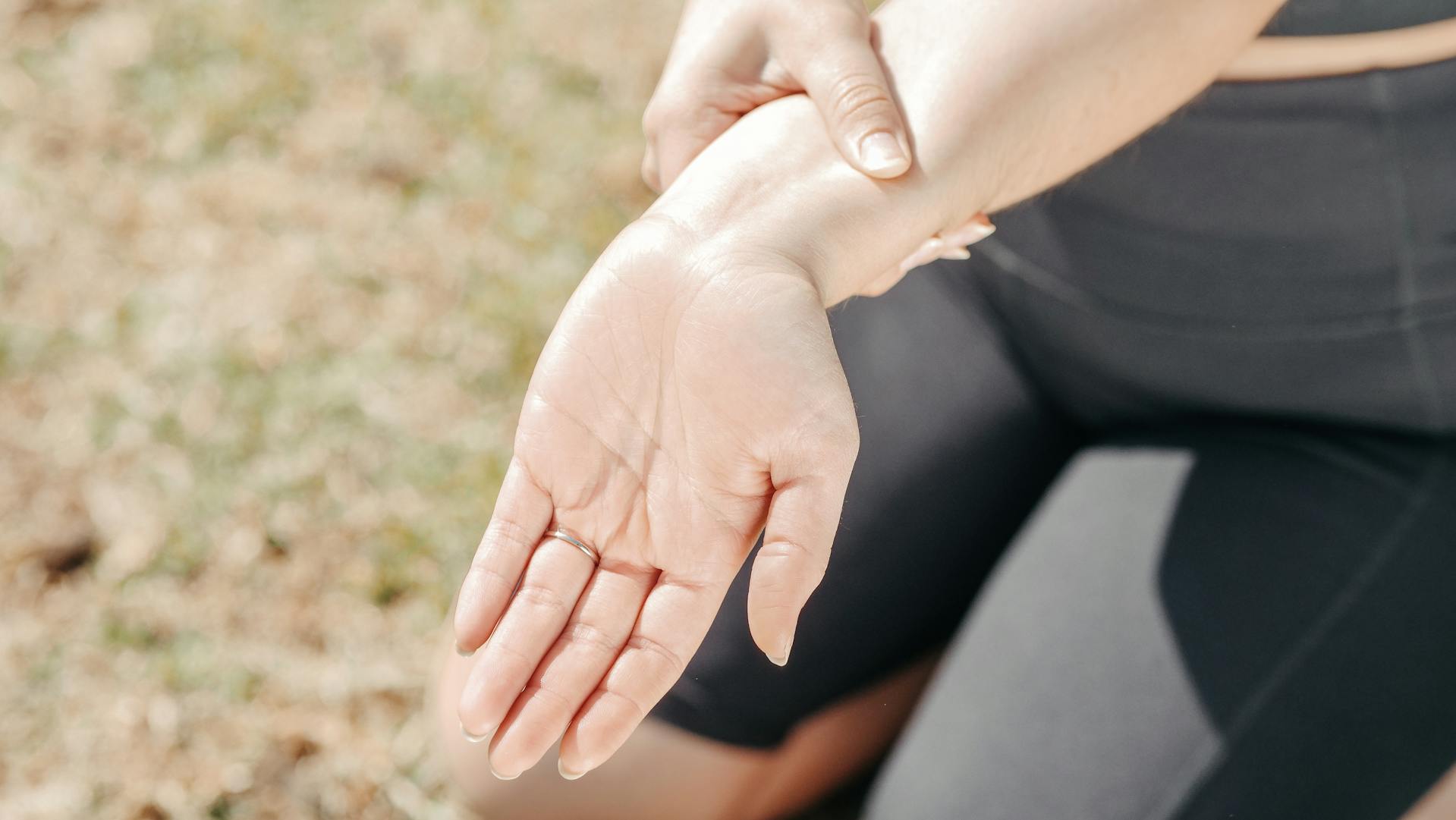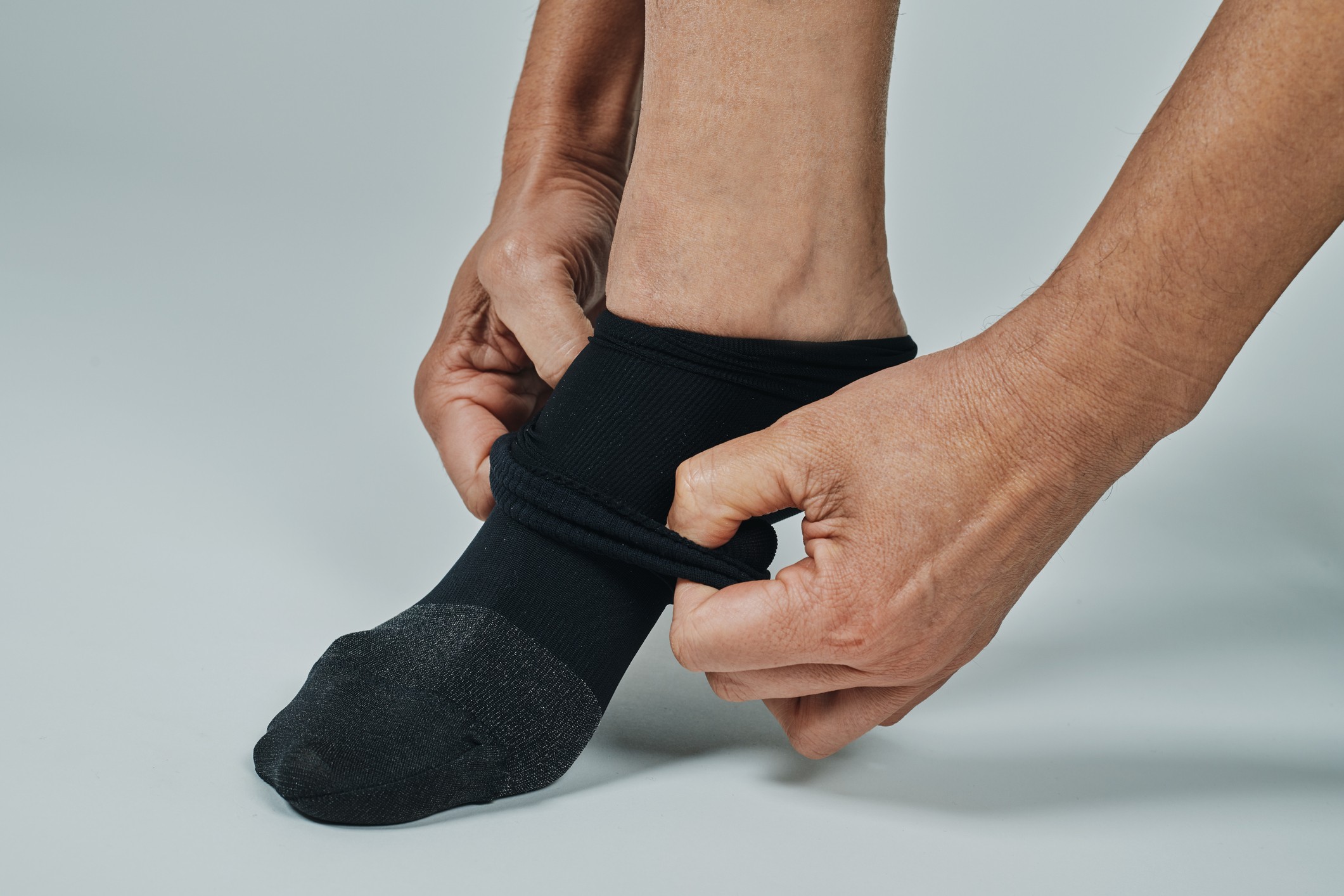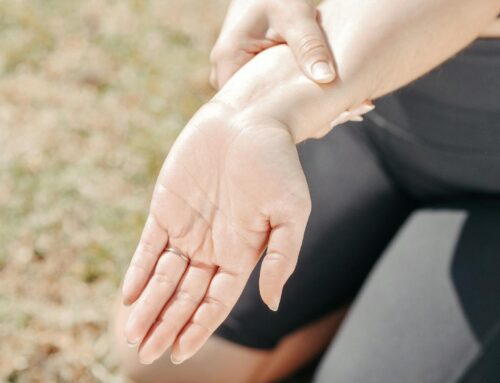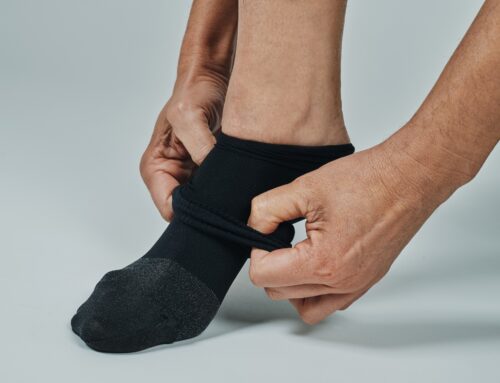Orthotics are specialized devices, tailored to the contours of an individual’s feet, serve not just as mere insoles but as instrumental tools in maintaining proper foot alignment, distributing weight evenly, and providing necessary support to mitigate stress on the lower extremities.
By realigning the structure of the feet and ankles, orthotics effectively help in reducing strain on muscles and joints, thus offering significant relief from pain and discomfort.
What are Orthotics?
Custom-made to support, align, and improve the function of the feet and lower limbs, orthotics differ significantly from standard shoe inserts. These specialized inserts cater to the unique structure and needs of an individual’s feet, offering personalized care. Available in various forms, orthotics specifically address distinct foot conditions and lifestyle requirements. The main types of orthotics include:
Functional Orthotics
Functional orthotics actively control abnormal foot motion, primarily addressing foot pain resulting from irregular movements. They effectively treat conditions such as shin splints and tendinitis by stabilizing and correcting the foot’s movement, reducing stress on muscles and joints.
Accommodative Orthotics
Softer and more cushioned, accommodative orthotics provide extra support and comfort. They particularly benefit individuals with sensitive feet conditions, such as diabetic foot ulcers or plantar fasciitis, by distributing pressure more evenly and reducing strain on painful areas.
Semi-Rigid Orthotics
Designed to balance the foot during walking or sports activities, semi-rigid orthotics are ideal for athletes. They combine flexibility and support, helping to alleviate pain and enhance performance during training and competition by ensuring proper foot alignment and movement.
The science behind how orthotics help in relieving discomfort lies in their ability to correct foot alignment and improve the overall biomechanical function of the foot and ankle. When the foot is not properly aligned, it can lead to a domino effect of misalignment in the knees, hips, and lower back, potentially causing pain and discomfort in these areas. Orthotics work by redistributing pressure across the foot, decreasing the stress on vulnerable areas, and providing the necessary support where it’s most needed.
Custom orthotics are designed based on a thorough assessment of the individual’s foot structure, gait analysis, and specific health needs. They can accommodate the unique contours of each foot, ensuring a precise fit and effective relief.
By aligning the foot and ankle into the most anatomically efficient position, orthotics help reduce strain on muscles and joints, thereby alleviating pain and preventing further injuries. This personalized approach to foot care is not just about managing pain but also about enhancing the overall quality of life and mobility.
The Benefits of Orthotics
Orthotics, as specialized foot care devices, offer a multitude of benefits that extend beyond mere pain relief. Their impact is wide-ranging, addressing various aspects of foot health and overall well-being.
Improved Foot Support and Alignment
Orthotics are expertly crafted to provide tailored support to the arches and contours of the feet. This support is important for maintaining proper foot alignment, which is essential for the correct distribution of body weight. By ensuring that feet are properly aligned, orthotics help in preventing overpronation (rolling inward of the foot) or supination (rolling outward), common issues that can lead to a host of other foot problems.
Reduction in Pain and Inflammation
One of the primary functions of orthotics is to alleviate discomfort in the feet, ankles, and even in areas like the knees, hips, and lower back. By correcting foot alignment and providing adequate support, orthotics reduce the stress on muscles, tendons, and joints. This stress reduction directly contributes to decreasing pain and inflammation, particularly in conditions such as plantar fasciitis, arthritis, and foot injuries.
Enhanced Mobility and Comfort in Daily Activities
Orthotics play a significant role in enhancing mobility by reducing discomfort during movement, thereby encouraging more physical activity. They also add an extra layer of cushioning, which increases overall foot comfort during various activities, be it walking, running, or standing for extended periods. This improved comfort and mobility can significantly enhance the quality of life, especially for individuals with chronic foot conditions or those who spend a lot of time on their feet.
Custom Orthotics vs. Over-the-Counter Options
When considering orthotic solutions, it’s important to understand the differences between custom orthotics and over-the-counter (OTC) options. Both have their place in foot care, but their benefits and limitations vary significantly.
Custom Orthotics
- Tailored Fit
Custom orthotics are specifically designed based on a detailed assessment of an individual’s foot structure, gait, and specific health needs. This ensures a precise fit and targeted support. - Corrective Support
They are highly effective in addressing specific foot conditions, including severe misalignments, abnormal gaits, and unique foot shapes. - Durability
Generally, custom orthotics are made of high-quality materials and last longer than OTC options. - Limitations
The main limitation is the higher cost compared to OTC orthotics. Additionally, the process of getting custom orthotics requires a consultation, which can be time-consuming.
Over-the-Counter Options
- Accessibility and Convenience
OTC orthotics are readily available and can be purchased without a prescription or specialist consultation. - General Support and Comfort
They provide general cushioning and support, which can be sufficient for individuals with mild foot discomfort or those seeking additional foot comfort. - Cost-Effective
OTC options are more affordable than custom orthotics. - Limitations
They are not tailored to individual needs and may not provide adequate support for more severe foot conditions. Their one-size-fits-all approach can sometimes even exacerbate existing foot problems.
How Orthotics Aid in Specific Conditions
Orthotics have proven to be highly effective in managing and alleviating symptoms of various foot-related conditions. Through the expert insights provided by Care-Med LTD’s in-house Chiropodist and Chiropodist, we can delve into specific case studies and examples that demonstrate the impact of orthotics in treating different foot conditions.
Plantar Fasciitis
One of the most common foot conditions, characterized by sharp heel pain, plantar fasciitis is often caused by excessive strain on the plantar fascia. A patient case involved a middle-aged runner experiencing severe heel pain each morning. Custom orthotics were designed to provide arch support and cushioning, redistributing pressure away from the heel. Within weeks of using these orthotics, the patient reported a significant reduction in morning pain and was able to resume running without discomfort.
Flat Feet (Pes Planus)
Patients with flat feet often experience pain and fatigue due to the lack of natural arch support. A case study involved a patient with flat feet suffering from chronic foot pain and difficulty in walking long distances. Custom orthotics were crafted to provide the necessary arch support, alleviating the stress on the feet. The patient reported improved comfort in daily activities and a noticeable decrease in foot pain.
Diabetic Neuropathy
Diabetics often suffer from foot sensitivity and are at risk of developing ulcers. A diabetic patient with neuropathy was provided with soft, cushioned orthotics to reduce the risk of skin breakdown. The orthotics also helped in evenly distributing pressure, which is important to prevent ulcers. The patient experienced improved comfort and a reduced risk of foot complications.
Overpronation
Overpronation, where the foot rolls inward excessively, can lead to knee and hip pain. A young athlete with overpronation was experiencing knee pain during sports activities. Custom orthotics were designed to correct the foot alignment, thus reducing the inward roll. This adjustment alleviated the knee pain and enhanced the athlete’s performance.
Bunions and Hammertoes
Conditions like bunions and hammertoes create pressure points on the foot. A patient with these conditions was fitted with orthotics that had special padding to relieve pressure on the affected areas. This intervention not only reduced pain but also slowed the progression of the deformities.
The in-house experts at Care-Med LTD emphasize that while orthotics are highly beneficial in managing these conditions, each case requires a personalized approach. The effectiveness of orthotics depends on accurate diagnosis, precise customization, and ongoing assessment to ensure the best outcomes for each patient. By addressing the specific needs of each foot condition, orthotics can significantly improve a patient’s quality of life.
Integrating Orthotics into Your Lifestyle
Adopting orthotics into your daily routine can be a transformative experience, enhancing comfort and mobility. However, it’s essential to understand how to properly integrate and maintain them for optimal benefits. Below are some tips on adjusting to and maintaining orthotics, as well as incorporating them into different types of footwear.
Adjusting to Orthotics:
- Gradual Introduction
Start by wearing your orthotics for a few hours each day, gradually increasing the duration over a couple of weeks. This allows your feet and body to adapt comfortably. - Listen to Your Body
Some initial discomfort is normal, but persistent pain isn’t. If you experience significant discomfort, consult with your orthotic provider for adjustments. - Regular Check-ins
Schedule follow-up appointments with your orthotic specialist to ensure the orthotics are functioning as intended and to make any necessary adjustments.
Maintaining Orthotics:
- Regular Cleaning
Clean your orthotics regularly with a mild soap and water, avoiding soaking them. Allow them to air dry completely before using. - Inspect for Wear and Tear
Regularly inspect your orthotics for any signs of wear. If you notice significant wear, it may be time for a replacement or professional refurbishment. - Proper Storage
When not in use, store your orthotics in a cool, dry place away from direct sunlight to prevent material breakdown.
Incorporating Orthotics into Different Footwear:
- Appropriate Shoes
Ensure your shoes have enough depth and are wide enough to accommodate the orthotics comfortably. Shoes with removable insoles are ideal. - Sports and Activity Shoes
For athletic activities, make sure your sports shoes can accommodate the orthotics without causing tightness or discomfort. - Special Occasions
For special occasions or specific types of footwear (like high heels), consult with your orthotic provider for tailored solutions or modifications. - Multiple Pairs
Consider having multiple pairs of orthotics for different types of shoes, such as dress shoes, casual footwear, and athletic shoes.
By following these tips, you can effectively integrate orthotics into your lifestyle, ensuring they provide the maximum benefit while maintaining comfort in various activities and shoe types. Remember, the key to successful orthotic therapy is not just in the device itself but in how well it is integrated into your daily life and footwear choices.
Choosing the Right Orthotics for You
Selecting the appropriate orthotics is a critical decision that can significantly impact your comfort and foot health.
Factors to Consider When Selecting Orthotics
- Foot Condition
Understand the specific foot condition you are dealing with, whether it’s plantar fasciitis, flat feet, or overpronation. Different conditions require different types of support and correction. - Type of Orthotics
Decide between functional, accommodative, or semi-rigid orthotics based on your specific needs. Your choice should align with your foot condition and daily activities. - Material Quality
Consider the materials used in the orthotics. Materials should provide the right balance between support and cushioning and be durable enough to withstand daily wear. - Lifestyle and Activity Level
Your daily activities and lifestyle play a significant role in the type of orthotics you need. Athletes might require different orthotics compared to someone who spends most of the day standing or walking. - Shoe Compatibility
Ensure that the orthotics are compatible with most of your footwear. They should fit comfortably within your shoes without causing tightness or discomfort. - Comfort and Fit
Above all, orthotics should be comfortable. A proper fit is important to ensure effectiveness and ease of use.
Alleviating Foot Pain
The journey to alleviating foot pain and enhancing overall foot health significantly hinges on the effective use of orthotics. These specialized devices offer more than just temporary relief; they provide a foundation for improved foot support and alignment, reduction in pain and inflammation, and enhanced mobility and comfort in daily activities. The benefits of orthotics, particularly when customized, are vast and can lead to a substantial improvement in quality of life.
Custom orthotics, tailored to individual needs, stand apart in their ability to address specific foot-related conditions effectively. They are not a one-size-fits-all solution but a personalized approach to foot care, ensuring that each person receives the support and alignment necessary for their unique foot structure.
We encourage anyone experiencing foot discomfort or pain to consider the transformative potential of properly fitted orthotics. Consulting with the experts at Care-Med LTD is a step towards understanding your specific needs and exploring how custom orthotics can improve your daily life. Our commitment to quality care and personalized attention ensures that each client receives the best possible solution for their foot health concerns.
If you suspect that the pain that you’re experiencing in the feet or in joints elsewhere in the body is from faulty foot mechanics, we’re here to help. Schedule a foot assessment and let’s find out what’s really going on.
Share This Story, Choose Your Platform!
Table of Contents
We specialize in orthotics, body braces, and compression wear tailored to your unique needs in Toronto. Reach out to us at info@caremed.care or call 416-782-5353 to book your fitting and consultation.
Experience the difference of customized solutions designed just for you.











